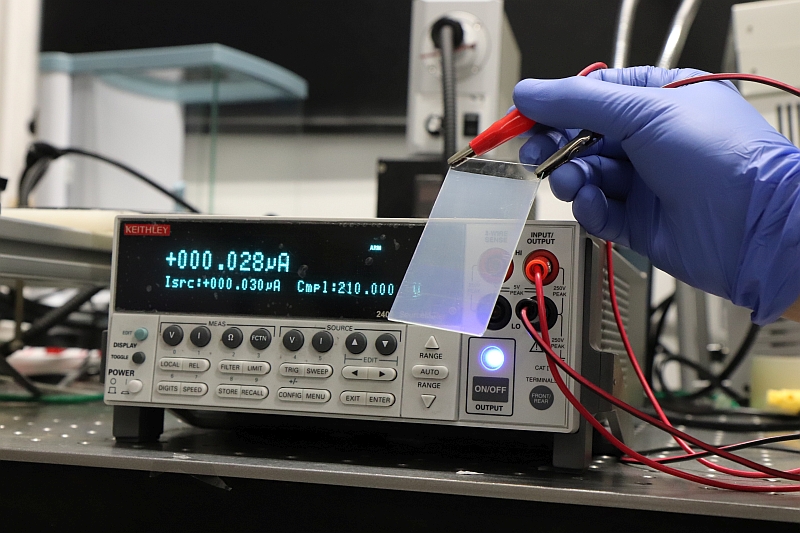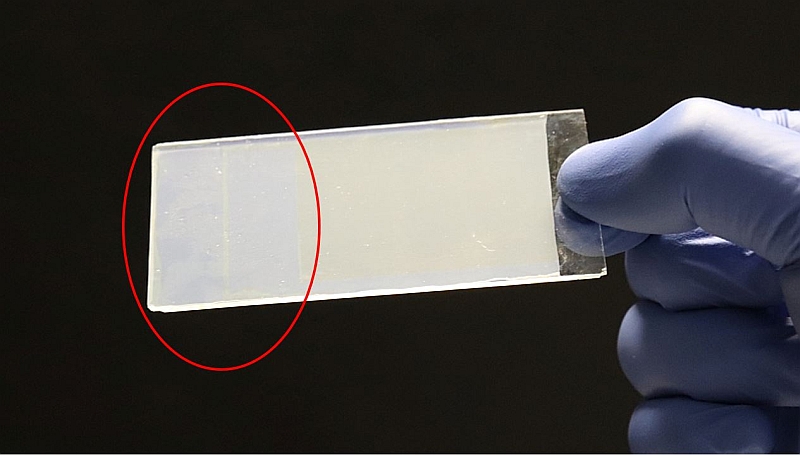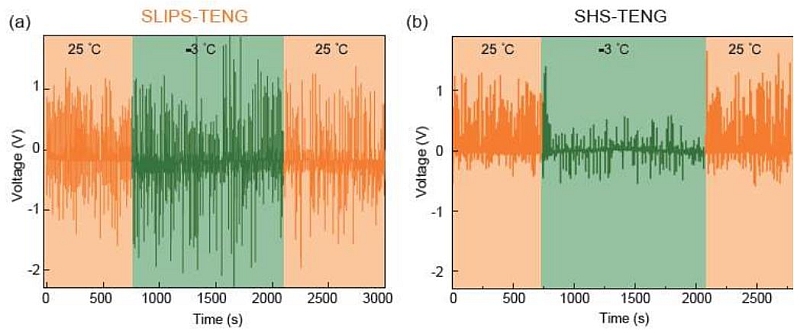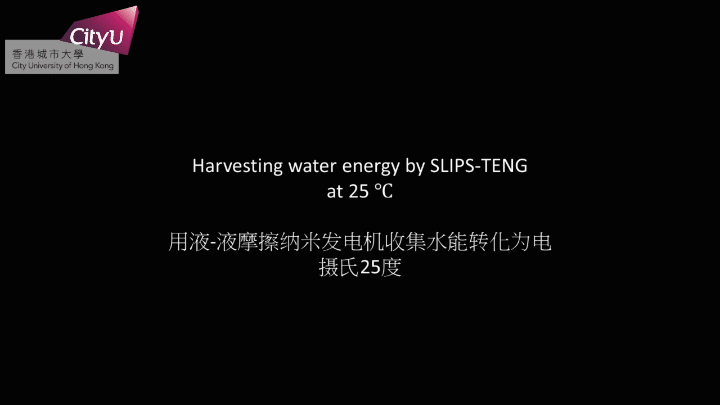New nanogenerator harvests water energy with slippery surfaces

While the consequences of climate change have begun to take their toll, global energy demand has grown at the fastest pace ever in the past decade. Exploring renewable energy alternatives has therefore become more pressing than ever. A recent study led by researchers from City University of Hong Kong (CityU) has developed a new triboelectric nanogenerator (TENG) using a slippery surface to enhance energy harvesting efficiency. The findings may open up a new avenue for the design of energy harvesting devices with better stability and durability.
Among many water energy harvesting approaches, TENGs, which were invented by Professor Wang Zhonglinfrom the Georgia Institute of Technology in the US in 2012, can convert mechanical energy to electrical energy and have received increasing attention over the past several years. The mechanism behind TENGs is based mainly on the triboelectric effect and electrostatic induction, which take place at either solid–solid or solid–liquid interfaces.
Currently, the solid interface of a solid–liquid TENG is designed to be hydrophobic or superhydrophobic, so that water droplets can be timely repelled to allow dry contact areas for continuous power generation. However, the physiochemical properties of the solid–liquid interfacial materials of conventional superhydrophobic-based TENGs (SHS-TENGs) are reduced when operating in harsh environments. At low temperature and very humid conditions, the nucleation of water droplets, ice or frost eventually results in a frozen surface, which blocks the charge generation. When submerged in water, biofilms form, limiting the longevity and energy efficiency of the device.
To overcome these limitations, a joint research project by CityU, the University of Science and Technology of China, East China Normal University, and the University of Nebraska-Lincoln has developed a new device by combining slippery lubricant-impregnated porous surface (SLIPS) technology with a TENG. In low temperature conditions, the output power of this SLIPS-based TENG (SLIPS-TENG) is at least an order or magnitude higher than that of the conventional SHS-TENG.


The SLIPS technology was invented by scientists at Harvard University in 2011, inspired by pitcher plants. The surface is super slippery, and it can repel various simple and complex liquids, including water, crude oil and blood, quickly restoring liquid-repellency after physical damage and resisting ice adhesion.
In this latest research, the team fabricated the SLIPS by infusing a perfluorinated liquid as a lubricant on the porous PTFE membrane. Then they combined the SLIPS with a TENG, forming a liquid–liquid–solid interface. The SLIPS-TENG exhibits better optical transparency, configurability, self-cleaning, flexibility and power generation stability than conventional TENGs. And it functions well at low temperatures, with more or less the same electric output as it does at room temperature. It can also be used in various wearable and flexible devices.

"We have successfully combined two seemingly different technologies, SLIPS and TENG, and achieved triboelectricity generation in a liquid–liquid interface," said Professor Wang Zuankai, from the Department of Mechanical Engineering at CityU, who led the research. "From a broader perspective, the marriage of SLIPS with TENG technologies can provide a paradigm shift in the design of blue energy devices with longer life and enhanced properties, which make them adaptable to a wide range of working conditions."

The research findings were published in the Beijing-based National Science Review, in an article titled “SLIPS-TENG: robust triboelectric nanogenerator with optical and charge transparency using a slippery interface”. Professor Wang was the corresponding author. The first co-authors were Xu Wanghuai, joint-PhD student at CityU and the University of Science and Technology of China; Dr Zhou Xiaofeng, from East China Normal University; and Hao Chonglei, from CityU. Other authors include Professor Michael Leung Kwok-hi, from the School of Energy and Environment; and Dr Yang Zhengbao, from the Department of Mechanical Engineering at CityU.
The research was supported by funding from the Research Grants Council of Hong Kong, the Shenzhen Science and Technology Innovation Council, and CityU.